Get PeakVisor App
Sign In
Search by GPS coordinates
- Latitude
- ° ' ''
- Longitude
- ° ' ''
- Units of Length

Yes
Cancel
Share ×

Scan the QR code and open PeakVisor on your phone
❤ Wishlist ×
Choose
Delete
The Hottentots-Holland Nature Reserve is located in the Western Cape of South Africa and is defined by its impressive mountainous landscape. There are 51 named mountains in Hottentots-Holland Nature Reserve. Victoria Peak is the highest and most prominent, measuring 1,591 meters (5,220 ft).
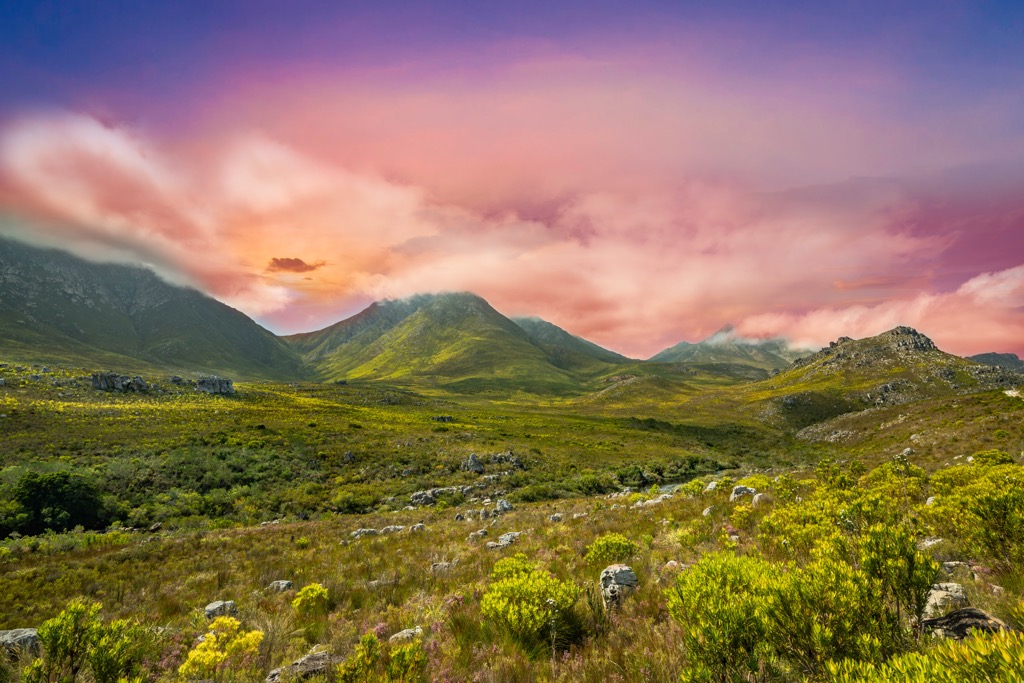
The Hottentots-Holland Nature Reserve is an ecologically diverse protected area spanning approximately 70,000 ha (172,934 ac). It is renowned for its scenic mountainscapes, biodiversity, and proximity to the Cape Winelands. The reserve is easily accessible from major cities such as Cape Town, located approximately 90 km (56 mi) to the southwest.
Geographically, the reserve is situated within the Hottentots-Holland mountain range, part of the larger Cape Fold Belt, known for its rugged and dramatic terrain. The elevation ranges from about 500 meters (1,641 ft) in the valleys to over 1,500 meters (4,921 ft) at the highest peaks, including Somerset-Sneeukop, Banghoek Peak, and Victoria Peak.
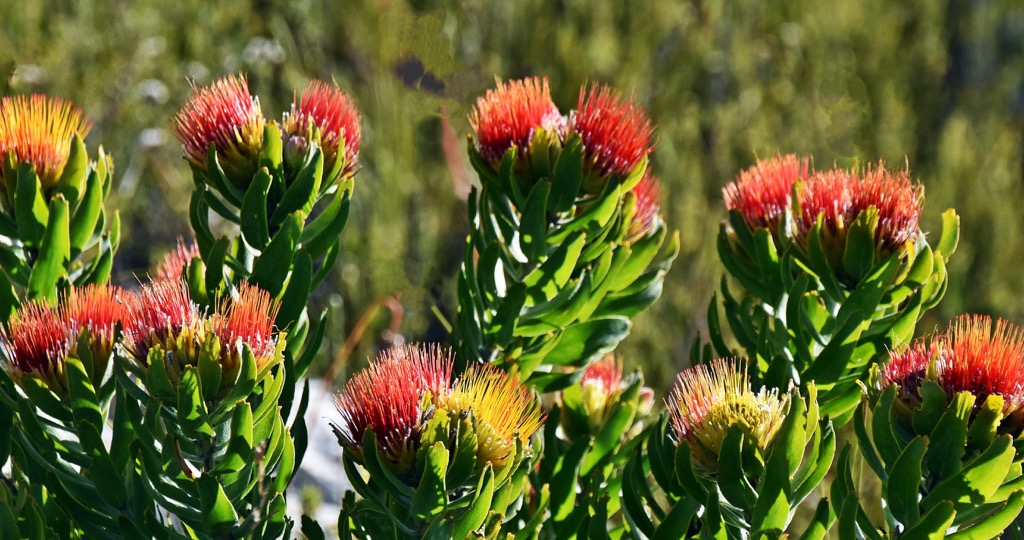
The reserve's deep valleys and steep gorges, shaped by erosion and geological activity, are challenging for hikers. Numerous rivers and streams, including the Palmiet River, originate here. Over millions of years, geological forces have created various microclimates and habitats within the reserve, from fynbos-covered slopes to Indigenous forests and riverine ecosystems.
The climate of the Hottentot-Holland Nature Reserve is typically Mediterranean, with wet winters and dry summers. During the winter months, the area experiences cool temperatures and significant rainfall, often resulting in snowfall on the higher peaks of the mountains. Conversely, the summer months are warm and dry, with temperatures frequently exceeding 30°C (86°F) in the lower elevations. This climatic variation contributes to the distinct seasonal changes in the reserve.
One prominent feature of the Hottentots-Holland Nature Reserve is its extensive fynbos vegetation. Fynbos is a unique and biodiverse vegetation type found only in the Cape Floral Region, a UNESCO Heritage Site known for its high levels of endemism and floral diversity.
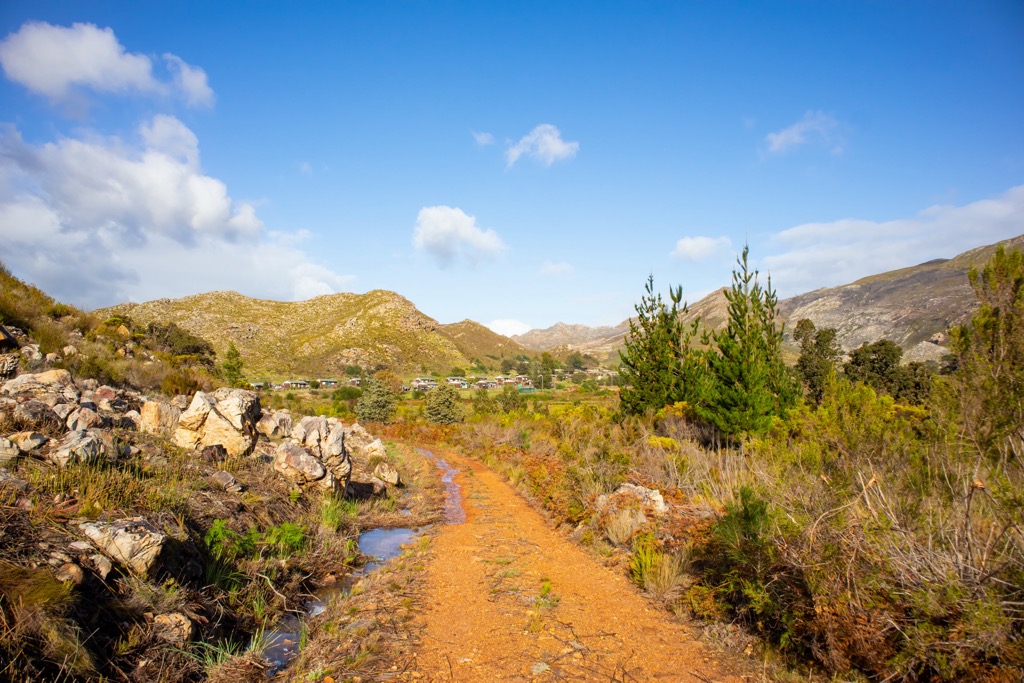
The Cape Fold Belt traverses the Hottentots-Holland Nature Reserve. It features rugged mountains and deep valleys formed 300 to 200 million years ago during the collision of the supercontinents Gondwana and Laurussia. The geology is dominated by quartzitic sandstones from the Table Mountain Group, deposited over 450 million years ago, forming high peaks and ridges. Shales and siltstones from the Bokkeveld Group are more prone to erosion and form the lower slopes and valleys.
The reserve includes classic fold structures like anticlines and synclines, along with reverse and thrust faults. The resistant sandstones create ridges and peaks, while erodible shales form deep valleys and gorges, with rivers like the Palmiet River contributing to the landscape.

The Hottentots-Holland Nature Reserve features rugged mountains, deep valleys, and diverse habitats, including fynbos, montane forests, and wetlands. The reserve's flora is dominated by fynbos, a fire-adapted shrubland biome. Notable species include the King Protea, numerous Erica species, and reed-like restios. Montane forests are found in sheltered ravines and on wetter slopes and feature indigenous hardwoods like Yellowwoods, while renosterveld vegetation occurs on more fertile soils.
Fauna in the reserve includes a variety of mammals, such as leopards, rock hyraxes, and antelope species like the grey rhebok and klipspringer. Birdlife is abundant, with endemic species like the Cape sugarbird and orange-breasted sunbird, as well as raptors like the black eagle. Reptiles and amphibians, such as the Cape dwarf chameleon and the Cape river frog, thrive in the reserve's varied environments.

The indigenous Khoi people originally inhabited the present-day Hottentots-Holland Nature Reserve, thriving as hunter-gatherers and pastoralists. European colonization in the 17th century, led by the Dutch East India Company, disrupted their way of life, with settlers seizing land and altering the landscape for farming.
During apartheid, indigenous communities faced severe discrimination and displacement. However, recent efforts emphasize conserving both the environment and indigenous cultural heritage. The establishment of nature reserves like Hottentots-Holland aims to protect biodiversity and promote sustainable land management.
Today, the reserve honors the resilience of both the natural environment and the indigenous communities. It highlights the historical interplay between humans and nature and the importance of conservation and cultural preservation for future generations.
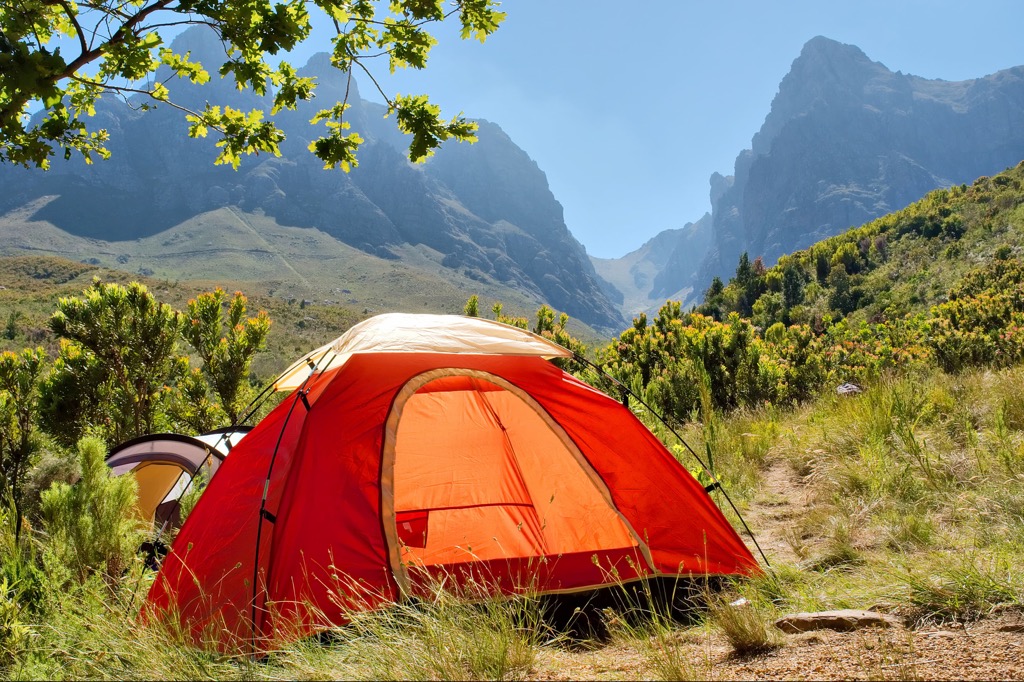
The Boland Hiking Trail is a renowned multi-day hiking route offering a moderate to challenging experience through the Western Cape's diverse landscapes. The trail spans approximately 40 km (25 mi) and is typically completed over three to five days, beginning near the town of Grabouw. It traverses mountain passes, river valleys, and slopes covered in indigenous fynbos vegetation. Hikers will enjoy panoramic views of Somerset-Sneeukop, Victoria Peak, and Triplet 1, mountain streams, waterfalls, and local wildlife such as baboons, antelope, and various bird species.

The Palmiet Trail is a 6 km (4 mi) hiking route known for its scenic beauty and easy terrain. Following the Palmiet River, the trail offers serene river views and numerous swimming spots, ideal for cooling off in warmer months. It winds through diverse vegetation, including fynbos and indigenous forests, showcasing a variety of plant species and attracting local wildlife such as birds, small mammals, and reptiles.
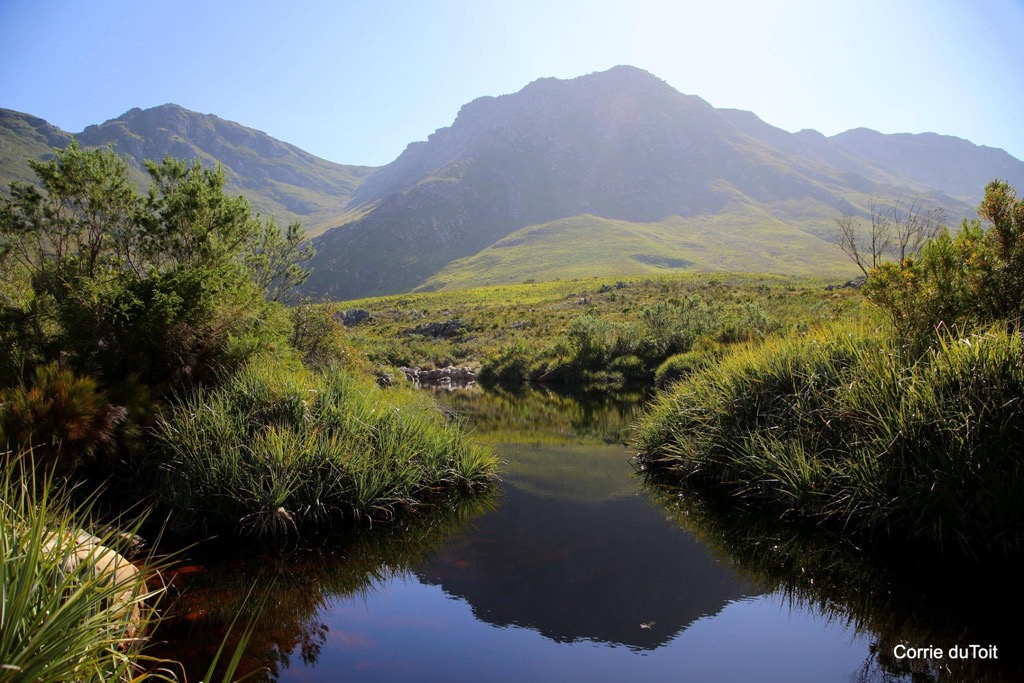
The Sphinx Trail offers a moderately challenging hike over approximately 8 km (5 mi). The trail, named for its distinctive Sphinx-like rock formations, rewards hikers with sweeping views of the Jonkershoek Valley and the surrounding mountains of Dwarsberg, Victoria Peak, and Emerald Dome. The trail ascends gradually from the reserve's main entrance before reaching steeper sections near the rock formations. Along the way, hikers can enjoy the region's rich biodiversity, including endemic fynbos vegetation and abundant bird life, especially during flowering season.
The Landdroskop Hiking Trail is a moderately challenging 10 km (6 mi) one-way trail known for its dramatic landscapes and abundant vistas. This trail takes hikers to Landdroskop, which stands at 1,133 meters (3,717 ft) and offers stunning vistas of the surrounding mountains and valleys. The route is steep and rocky in parts. Key highlights include the diverse vegetation, with sections of fynbos and patches of indigenous forest, and the opportunity to see local wildlife, such as baboons and small antelope.
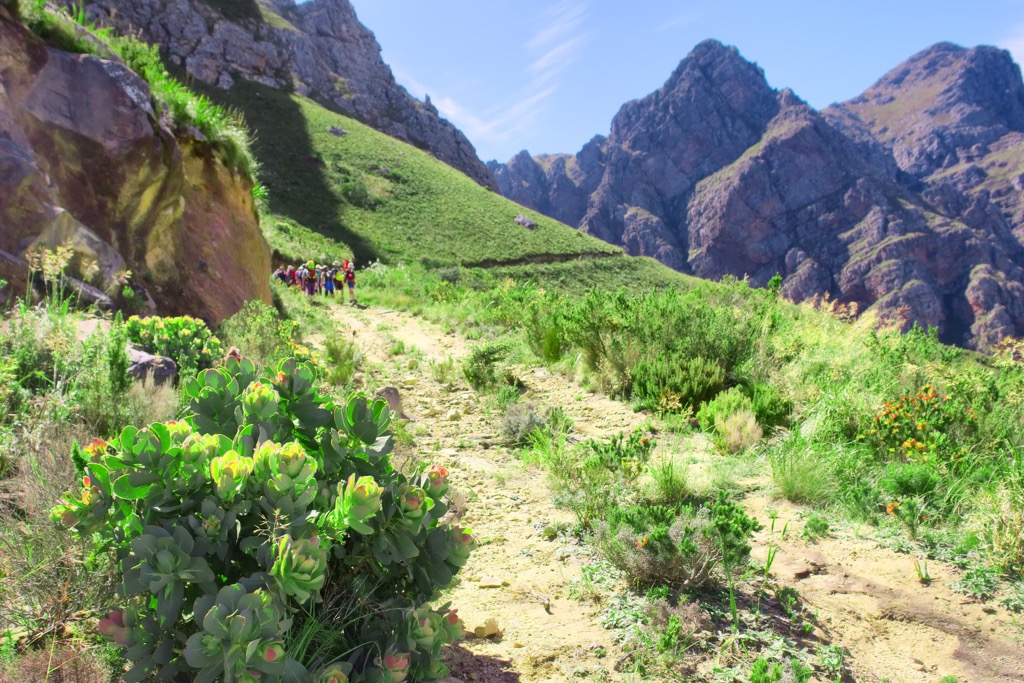
Stellenbosch, located in South Africa's Western Cape province, is surrounded by mountains and vineyards. South Africa's second-oldest town was established in 1679 by Governor Simon van der Stel and is renowned for its beautifully preserved Cape Dutch architecture.
Stellenbosch is synonymous with wine, and many wineries in the area are well worth a visit; some of the most popular include Spier, Muratie, and Waterford Estate.
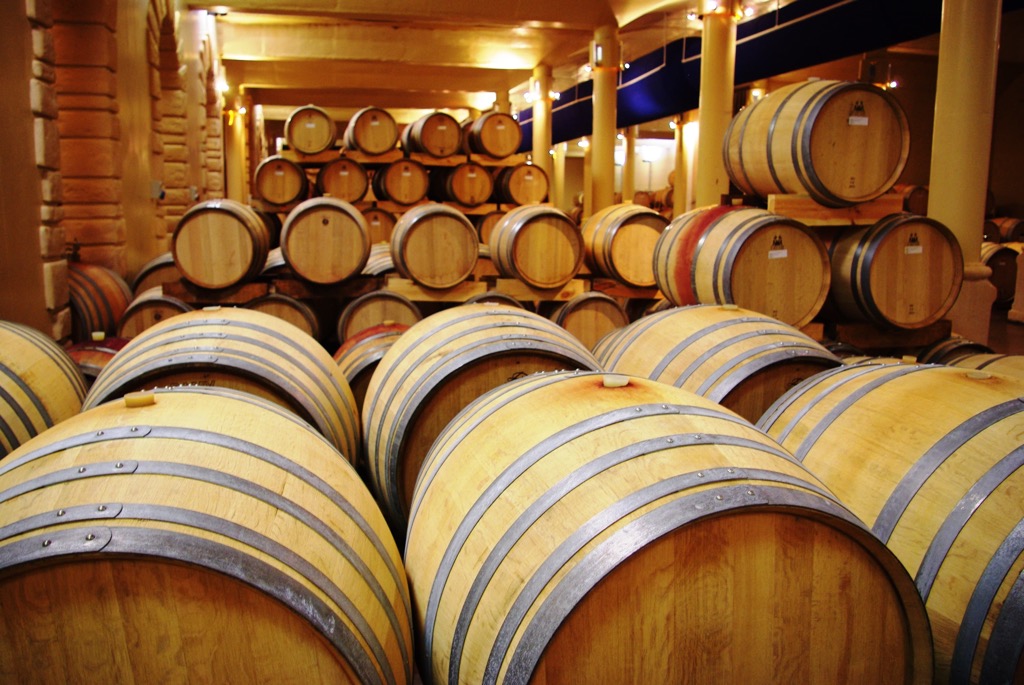
In addition to wineries, Stellenbosch has an extensive network of mountain and vineyard trails perfect for hiking, running, and mountain biking. The area has many nature reserves, such as the Jonkershoek and Assegaaibosch Nature Reserves.
Stellenbosch is rich in history and culture, and there are many art galleries, museums, and restaurants to explore. Attractions include the Rupert Museum, the Stellenbosch Village Museum, and the Oude Libertas Amphitheatre. Stellenbosch is also home to Stellenbosch University, which enrolls over 30,000 students and offers numerous cultural events on a nightly basis.
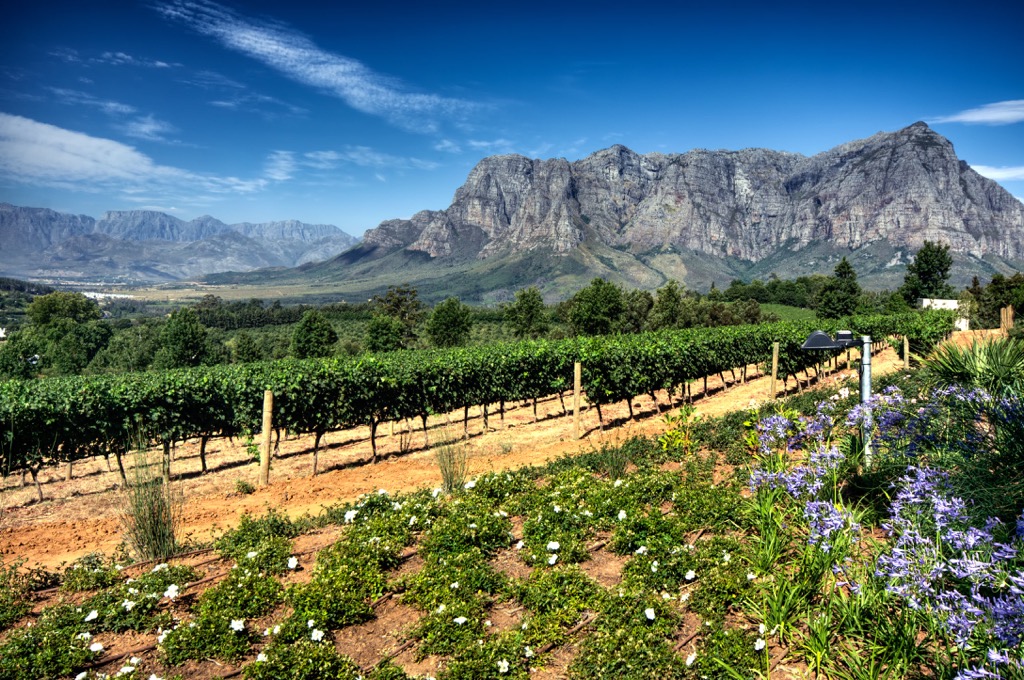
Known as French Corner due to its French Huguenot heritage, Franschhoek exudes an Old World charm, evident in its charming streets with antique shops, art galleries, and world-class restaurants. However, it’s the wine farms that truly beckon travelers to visit.
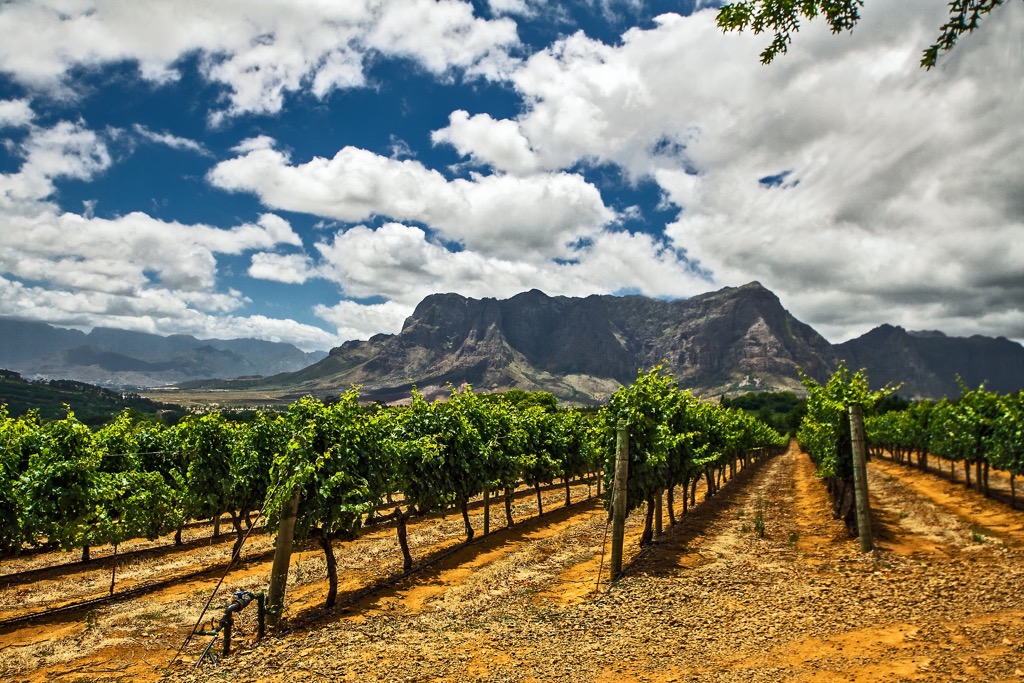
Throughout the year, Franschhoek hosts various festivals and events that draw visitors from near and far. The Franschhoek Bastille Festival in July celebrates the town's French heritage with wine tastings, street markets, and live entertainment. The Franschhoek Cap Classique & Champagne Festival in December is a sparkling wine lover's dream.
Franschhoek boasts more than 40 world-class wineries and vineyards. The town is renowned for producing some of the country's finest wines, particularly Chardonnay, Cabernet Sauvignon, and Shiraz. Visitors can embark on wine-tasting tours to sample exquisite wines while taking in breathtaking vineyard views. Be sure to visit iconic wineries like La Motte, Haute Cabrière, and Rupert & Rothschild Vignerons. The Franschhoek Wine Tram provides a convenient way to tour multiple vineyards without driving.
Beyond its wine prowess, Franschhoek is steeped in culture and art. The town is peppered with art galleries showcasing the works of local and international artists. Take advantage of the opportunity to visit the Franschhoek Motor Museum, which boasts an impressive collection of vintage cars. The Huguenot Memorial Museum offers insights into the town's history and the influence of the French Huguenots.

For nature enthusiasts, the Mont Rochelle Nature Reserve offers hiking trails with views of the Franschhoek Valley and surrounding mountains. Trails range from easy walks to more challenging hikes, catering to all fitness levels.
Explore Hottentots-Holland Nature Reserve with the PeakVisor 3D Map and identify its summits.








